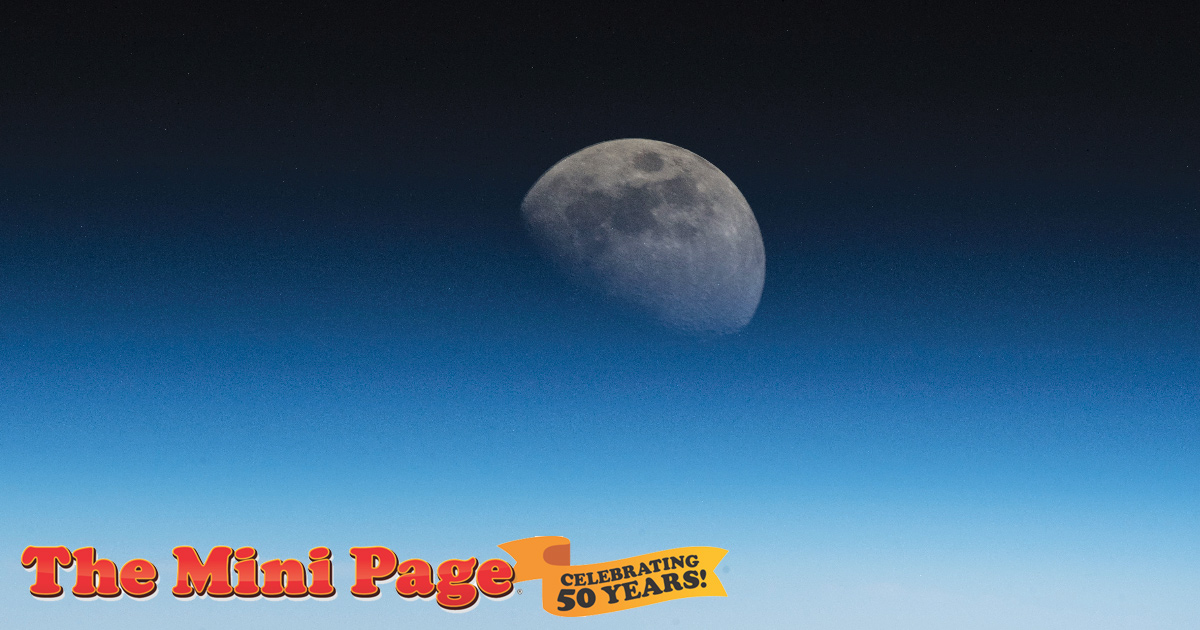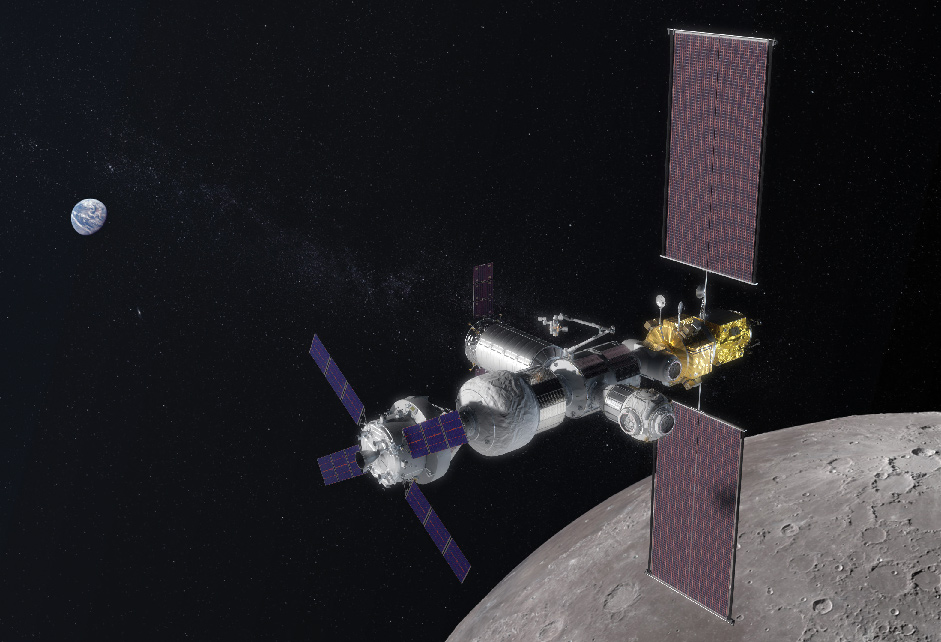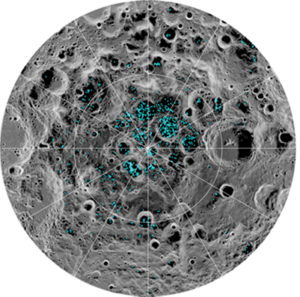
AMP | Kids is proud to announce an ongoing partnership with The Mini Page, now in its 50th year of providing engaging and fun learning opportunities to young readers across the country. This feature was originally syndicated in newspapers the week of September 20 – September 26, 2019. It is distributed digitally here with permission from Andrews McMeel Syndication. Enjoy and share with the young learners in your life!
Right on the heels of celebrating the 50th anniversary of the Apollo moon landing, the National Aeronautics and Space Administration (NASA) is looking ahead with its Moon to Mars program. The Mini Page talked with officials at NASA to find out where our space program is going next.
Vice president’s challenge
In March 2019, Vice President Mike Pence spoke at the U.S. Space and Rocket Center in Hunstville, Alabama. During that speech, he challenged NASA to return to the moon within five years.
NASA’s Moon to Mars program is about more than landing humans on the moon again, though. By going there, astronauts and scientists can test new tools, instruments and equipment that could be used for trips to Mars.
Apollo’s twin, Artemis
Artemis (AR-tuh-miss) is NASA’s name for the lunar missions they are planning. Artemis is the Greek goddess of the moon and hunting. She was the twin sister of Apollo.
Some of your older relatives may remember watching on TV as Apollo astronauts first walked on the moon in 1969. NASA looks forward to a whole new generation of Americans watching as explorers again set foot there as part of the Artemis 3 mission by 2024.
Getting there
The Orion (oh-RYE-un) spacecraft will carry crew members to the Gateway, a small spaceship that will orbit the moon as a home base for astronaut missions to the surface of the moon. (Gateway will be about the size of a small apartment, whereas the International Space Station, or ISS, is about the size of a six-bedroom house.) Gateway may include labs, ports where spacecraft can dock, and living quarters for astronauts.
From Gateway, astronauts will be able to shuttle to and from the moon on landers, which they can also live in while on the moon’s surface.

An artist’s idea of what the Gateway could look like.
Getting ready to go
Astronauts in training could be among the first ones chosen for the early Artemis missions. NASA officials also expect these missions to deliver the first woman to the moon by 2024.
Spacesuits now in use haven’t changed much for 40 years, experts said. But new suits are being developed for the Artemis missions. These suits will be modular, or in sections. They will be used for travel to different environments and will offer more mobility, or ability to move around, for astronauts.
Why go to the moon?
NASA will send new science instruments and technology demonstrations to the moon before human missions. Scientists here on Earth will gain a great amount of new knowledge about our lunar satellite. Gateway’s orbit will allow it to always be facing Earth, which means it will always be in communication with Earth.

The moon’s south pole, with deposits of ice marked in blue
Human missions from Gateway to the moon will start at the southern pole, where humans have never been before. Scientists believe there may be water ice deposits at the south pole that could be used to make rocket fuel.
The moon’s dirt also could be used to build structures using 3D printing. Even tools and parts could be built in this way and then recycled for other objects. This would save having to bring all the tools and parts to space to build structures or equipment. In fact, astronauts on the ISS are testing 3D printing now.
Research on Earth and aboard the ISS helps NASA understand what happens to the human body when it’s in space for a long time. For example, how does long-term exposure to space radiation affect the body? What about the effects of reduced gravity?
Resources
On the Web:
At the library:
-
Mission to Mars by Mary Kay Carson
Teachers: For standards-based activities to accompany this feature, visit Andrews McMeel Syndication. And follow The Mini Page on Facebook!
